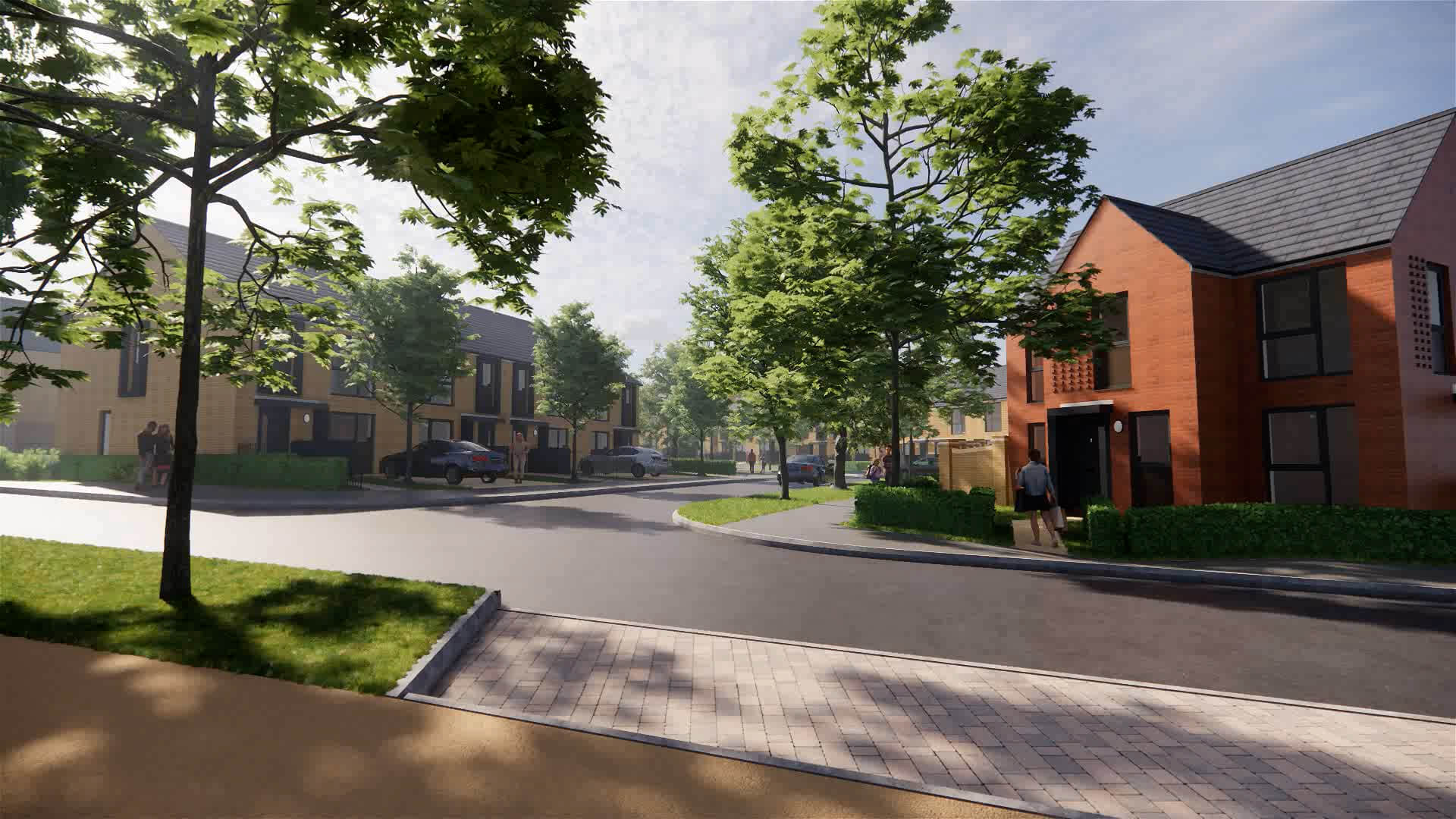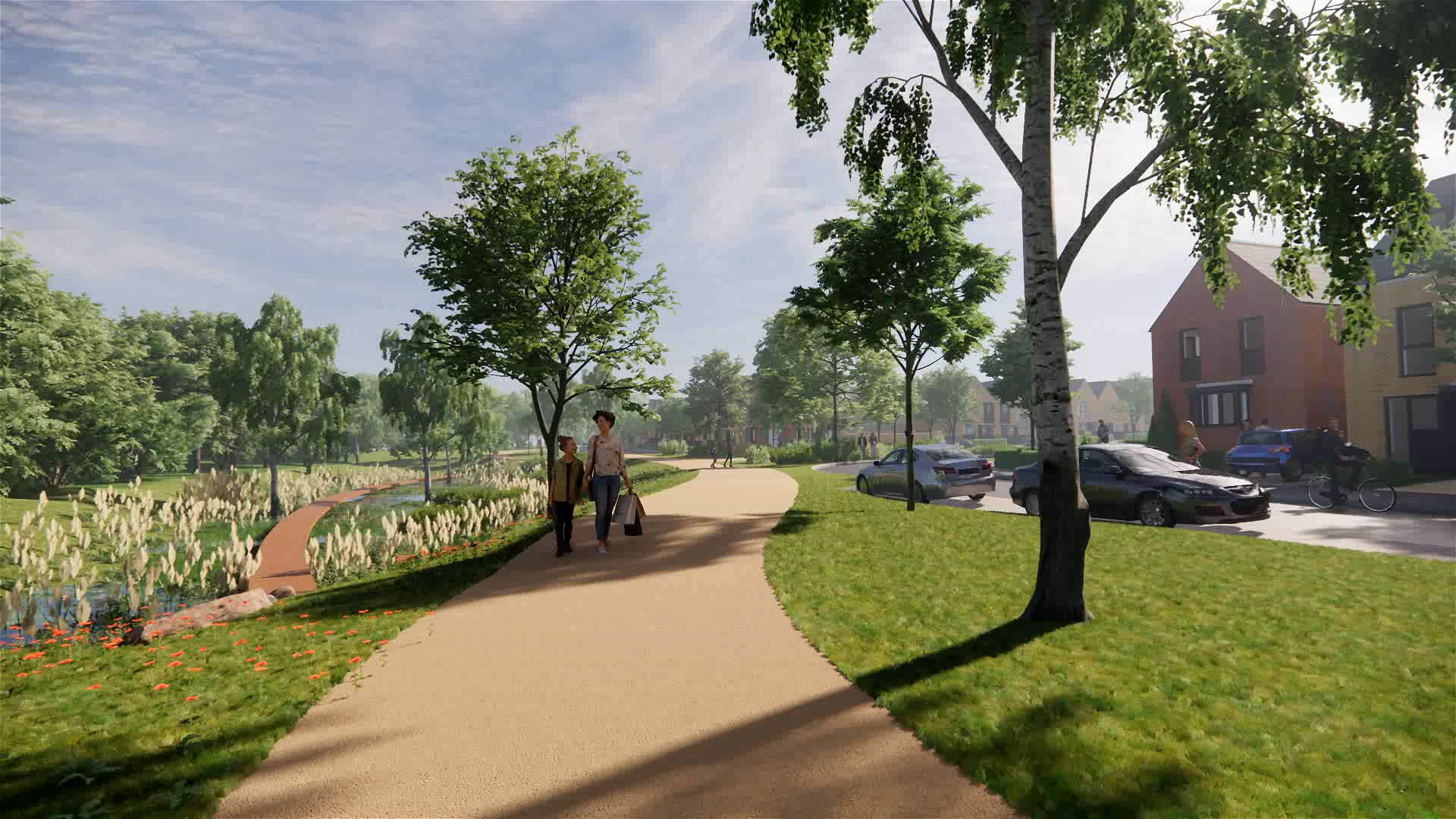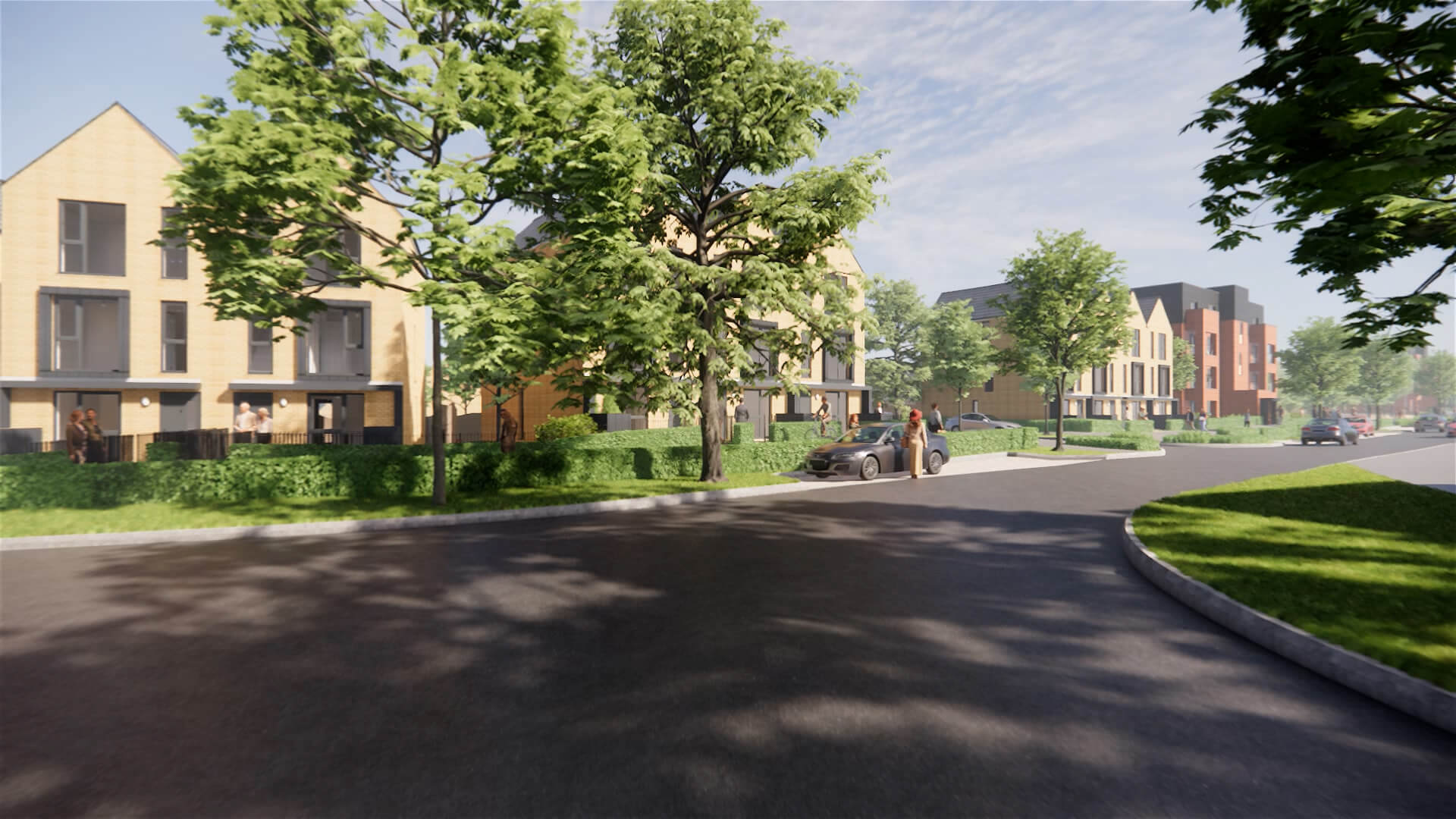Keepmoat Homes, Hartcliffe
Bristol

Project Details
Practice
Roberts Limbrick Ltd , The Carriage Building , Bruton Way , Gloucester , Gloucestershire , GL1 1DG , United Kingdom
We were commissioned by Keepmoat and their affordable partner LiveWest to prepare design proposals for a competition for a site owned by Bristol City Council in Hartcliffe. The brief was for 350 residential houses and apartments, including modular homes and affordable housing. A critical aspect of the brief was to develop a scheme that would minimise carbon use. The site was also ecologically sensitive, and this needed to be considered at every step of the planning process. To maximise the efficiency of the buildings, we used a fabric first approach to enhance energy performance. We combined high-performance building envelopes and good passive design principles, while exploring different options to optimise renewable energy generated on site. A major challenge was the sensitive planning nature of the site. This was addressed though close collaboration with the local authority, and fortnightly workshops were held with Bristol City Council to review the evolving design. We also worked with sustainability consultants throughout the design process. This ultimately helped to ensure that when the application was formally submitted, it was determined quickly and smoothly without extensive conditions. The combination of extensive renewables and highly efficient building designs all help to minimise energy use and provide an exemplar sustainable scheme. The original design code required a central energy centre which was evaluated and found to be uneconomic for this development. We had to consider alternative options and decided to use a ground source heat pump system throughout, whereby clusters of units were connected to a bore hole in the rear garden. Sustainable drainage systems were incorporated as well as ecological initiatives, such as a wildflower ‘pollinator park’, a wildlife corridor and 450 new trees.


